F&M Tool and Die has extensive experience in insert molding Thermoplastic materials. Insert molded parts can be injection molded, transfer molded, or compression molded. Machine parts, metal stampings, photochemically etched parts, cold headed parts, die cut plastic parts, insulated wires, flexible circuits, lead frames, ceramic, phenolic or composite insulators, are only a few of the insert varieties that we work with.
Our expertise in design and selection of these various inserts include:
- Selection of appropriate processing techniques for insert molding
- Procurement and/or manufacture of inserts
- Development of an extensive supplier base in the various manufacturing disciplines required to deliver these parts
- Development of plating resources
F&M Tool and Die Insert Molding services also include:
- Mold design to accommodate insert molding processing to produce a robust insert molded assembly
- Plastic materials selection for insert molding to ensure success of the insert molded component in end-use applications
Insert Molding Design Benefits
There are a number of benefits to developing an insert-molded component, and include:
Parts consolidation
Reduction of part-to-part dimensional variability (consolidation of part counts into an assembly the tolerance stack-up of multiple parts can be avoided)
Reduction of part size and weight
Reduction of “Touch Labor” which may result in quality problems.
Overall cost reduction
F&M Tool and Die offers extensive engineering and design support to aid customers with insert design, material selection and plating. Our integrated consultation, design and manufacturing process delivers a complete insert-molded assembly. All aspects of the process are the responsibility of F&M Tool and Die.
WHAT IS INSERT MOLDING?
Insert molding is a process used in manufacturing where a pre-formed component, often a metal or plastic insert, is placed into a mold, and then plastic material is molded around it to create a single integrated product. This process combines the benefits of metal or plastic inserts with the design flexibility and efficiency of injection molding.
Here’s a basic overview of the insert molding process:
- Insert Placement: The pre-made insert is carefully placed into the mold cavity. This insert can be made of various materials, such as metal or another type of plastic.
- Molding: Once the insert is in place, molten plastic is injected into the mold. The plastic material surrounds and encapsulates the insert, forming a single, integrated product.
- Cooling: The mold is cooled to allow the plastic to solidify and take the shape of the mold.
- Ejection: The finished part, now consisting of the molded plastic and the inserted component, is ejected from the mold.
Insert molding offers several advantages:
- Cost Efficiency: It can reduce the need for secondary assembly processes since multiple components can be combined into a single molding step.
- Enhanced Strength and Durability: The integration of metal inserts can provide added strength or other properties to the final product.
- Complex Designs: It allows for the creation of complex and intricate designs by combining different materials with varying properties.
Common applications of insert molding include electronic components, medical devices, automotive parts, and various consumer products where combining different materials in a single molded part is beneficial.
INSERT MOLDING vs INJECTION MOLDING
Insert molding and injection molding are related processes, both falling under the broader category of plastic molding techniques, but they differ in their fundamental approach and the types of products they are suited for.
Injection Molding:
- Process:
- In injection molding, molten plastic is injected into a mold cavity at high pressure.
- Material:
- Typically, injection molding involves molding a single material, usually plastic, to create a final product.
- Product Complexity:
- Injection molding is well-suited for producing complex and intricate parts with detailed features.
- Application:
- Commonly used for the mass production of plastic parts, such as bottle caps, containers, and various components in industries like automotive, electronics, and consumer goods.
Insert Molding:
- Process:
- In insert molding, a pre-formed component (insert), often made of metal or plastic, is placed into the mold, and then plastic material is injected around it.
- Material:
- Involves the combination of different materials. The insert can add specific properties (such as strength or conductivity) to the final product.
- Product Complexity:
- Suitable for creating complex parts while incorporating the benefits of the inserted material.
- Application:
- Commonly used in applications where the combination of different materials or the integration of pre-made components is beneficial. Examples include electronic components, medical devices, and automotive parts.
Key Differences:
- Material Combination: The primary distinction is that insert molding involves combining different materials (inserts and plastic), while injection molding typically uses a single material.
- Process Complexity: Insert molding is a two-step process, involving the placement of the insert before molding, whereas injection molding is a single-step process.
- Application Focus: Insert molding is often chosen for applications where the benefits of combining materials or integrating pre-made components are crucial, while injection molding is more focused on high-volume production of single-material parts.
In summary, while both insert molding and injection molding are plastic molding processes, insert molding stands out for its ability to combine different materials in a single, integrated product, offering unique advantages for specific applications.
INSERT MOLDING vs OVERMOLDING
Insert molding and overmolding are both plastic molding processes that involve combining multiple materials or components. However, there are key differences between the two processes:
- Definition:
- Insert Molding: In insert molding, a pre-formed component (insert) is placed into the mold, and molten plastic is then injected to encapsulate the insert. The plastic forms around, over, and sometimes through the insert, creating a single, integrated part.
- Overmolding: Overmolding involves molding one material (usually a soft or elastomeric material) over another previously molded part. The first part, often made of a rigid plastic or metal, is referred to as the substrate. The overmolded material is applied to the substrate to enhance its properties or provide additional features.
- Order of Molding:
- Insert Molding: The insert is placed into the mold before the plastic injection occurs.
- Overmolding: The first part (substrate) is molded separately before being placed into the mold, and then the overmolding material is applied in a subsequent molding process.
- Materials:
- Insert Molding: The insert is typically made of metal, but it can also be made of other materials such as ceramics or plastics.
- Overmolding: Two different materials are used—one for the substrate and another for the overmold. The substrate is often a rigid material, while the overmold is often a softer material with different properties.
- Applications:
- Insert Molding: Commonly used for integrating metal parts or components into plastic products. Applications include connectors, electronic components, and various industrial parts.
- Overmolding: Frequently employed for adding ergonomic grips, soft-touch surfaces, or sealing features to products. Common applications include tool handles, medical devices, and consumer electronics.
- Process Complexity:
- Insert Molding: Generally involves placing the insert into the mold, and then the plastic is injected, creating a relatively straightforward process.
- Overmolding: Involves molding the substrate, removing it from the mold, placing it back into a different mold, and then overmolding with a second material. This two-step process can be more complex and may require careful alignment of the substrate.
- Part Design and Functionality:
- Insert Molding: Primarily used for combining materials for structural or functional reasons, such as reinforcing a plastic part with a metal insert.
- Overmolding: Often used for adding features such as soft grips, color variations, or sealing elements to enhance the aesthetics and functionality of a product.
In summary, while both insert molding and overmolding involve combining different materials, they differ in terms of when the materials are combined in the molding process, the types of materials used, and the intended applications. Insert molding is about encapsulating a pre-formed insert, while overmolding is about applying a second material over a previously molded part.
TYPICAL APPLICATIONS FOR INSERT MOLDING
Insert molding is a manufacturing process in which a pre-formed component (insert) is encapsulated with molten plastic to create a finished part. This technique is widely used across various industries for its ability to combine different materials and functionalities into a single, integrated product. Here are some common applications of insert molding:
- Automotive Components:
- Insert molding is extensively used in the automotive industry to manufacture components such as electrical connectors, sensors, and switches. The process allows for the integration of metal contacts or other materials into plastic parts, reducing assembly time and improving overall part performance.
- Electronics:
- Many electronic devices and components benefit from insert molding. Examples include the encapsulation of connectors, terminals, and circuitry within plastic housings. This enhances durability, provides strain relief, and improves the overall reliability of electronic assemblies.
- Medical Devices:
- In the medical field, insert molding is used to create components such as surgical instruments, drug delivery devices, and disposable medical devices. The process enables the integration of metal elements, sensors, or other materials with the required biocompatible plastics.
- Consumer Goods:
- Various consumer products utilize insert molding for improved functionality and aesthetics. This includes items like power tool handles, appliance components, and cosmetic packaging. The process allows for the incorporation of metal, glass, or other inserts to enhance product features.
- Aerospace Components:
- Aerospace applications often require lightweight yet durable components. Insert molding is employed to create parts like brackets, connectors, and housings that meet the stringent requirements of the aerospace industry.
- Industrial Equipment:
- In the manufacturing and industrial sector, insert molding is used for creating parts with enhanced strength, wear resistance, and insulation properties. This includes components like gears, handles, and tool grips.
- Telecommunications:
- Connectors and housings for telecommunications equipment often involve insert molding. This process helps create parts that are not only functional but also durable and resistant to environmental factors.
- Appliances:
- Various appliances, such as washing machine components, refrigerator handles, and dishwasher parts, benefit from insert molding. The process allows for the integration of different materials to achieve the desired combination of strength, durability, and aesthetics.
- Sporting Goods:
- Sporting equipment like bicycle grips, golf club handles, and ski bindings often utilize insert molding to combine different materials for improved performance, comfort, and durability.
Insert molding offers advantages such as cost savings, reduced assembly time, and enhanced part integrity, making it a versatile process across a wide range of industries and applications.

